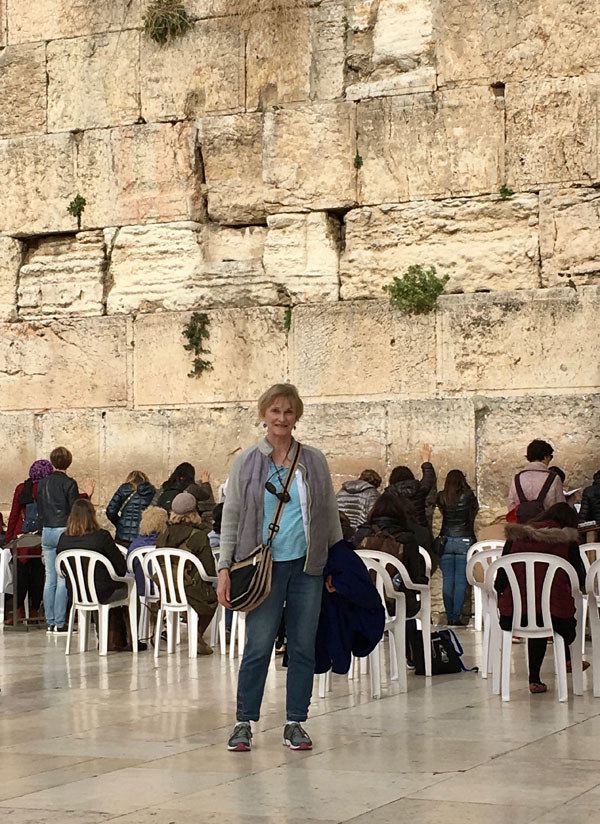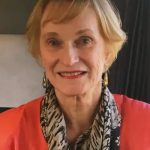Hard to believe Israel will ever be as it once was

Editor’s note: This is the first of a two-part series in which the author reflects on trips to Israel and Russia before the current wars broke out. Her original blog was cut to fit the Pioneer’s needs.
(Sept. 6, 2024) — I traveled to Berlin and Belgium in May. I’m not a subscriber of Ancestry.com, but I was interested in some vague sense of connection with my roots because my paternal grandparents had emigrated from Berlin. Yet, through my years of growing up during the Cold War, Berlin was off-limits.
Running through my head is the refrain from “As It Was,” a song by Harry Styles. It’s not necessarily why he wrote the lyrics, but they speak to me in this time of anxiety and change.
In this world, it’s just us
You know it’s not the same as it was.
World War II is over, Hitler is dead and the Berlin Wall came down in 1989 after the communist regime collapsed. So I was able to go to Berlin – because it’s not the same as it was.
That got me thinking about other countries where I had traveled: Israel and Russia. Like many other people, I remember places and events the same as they were when I was there. But I am no longer able to visit Israel and Russia, because both are now on the U.S. State Department’s Do Not Travel advisory. Hamas lobs rockets into Israel, and Americans are kidnapped off the street in Russia and jailed.
In Israel and Russia, it’s not the same as it was. I wonder if there is hope for the next generation to see these two fascinating countries as I once did.
Visiting historic sites
Bethlehem, Jordan, Jericho, the Red Sea – I had heard these names since childhood. I knew going to Catholic school that Jesus had traveled the Via Dolorosa, the Sorrowful Way, through Jerusalem on the way to his agony on the cross. I wanted to see and experience these biblical places I learned about in history.
My Jewish friend Nan wanted “to see all the trees she planted.” When she was a child, her family had joined others in contributing to the reforestation of the state of Israel, which had inherited degraded land stripped of its trees.
In March 2017, we joined a two-week tour that brought us to many of these famous sights, including the Western Wall, or “Wailing Wall,” in the Old City of Jerusalem. Built 2,000 years ago, it’s considered a sacred place because it’s the only remaining remnant of Temple Mount, the site of the First and Second Temples of Jerusalem.
I stood in the separate women’s section, where I joined others by putting a prayer into a crack in the wall. That’s not too different, I thought, than the Catholic religion’s practice of lighting a candle in church for a special cause. Underneath the wall, we toured tunnels conquerors of Jerusalem dug over the centuries: Herod, the Byzantines, the Muslims.
Each Easter, I visualize the small room where Christ celebrated the Last Supper. It’s located above the tomb of King David in the Jewish sector. In the Christian sector, we visited the Church of the Holy Sepulchre above the tomb where Jesus was buried. We walked along his path, the Via Dolorosa, memorialized by Catholics in the Stations of the Cross.
Too many times of war
We were able to take a jeep ride to the Golan Heights and look over a field of wildflowers into the valley and across to Lebanon. Over my shoulder was Syria. At my feet were yellow flags marking unexploded land mines left from the 1967 Six-Day War between Israel and Syria.
A bespectacled man with a long white beard served us a glass of wine at the Golan Heights Winery. A peaceful moment in the Golan Heights.
When I was in Israel, there was an uneasy peace. People and politicians discussed a two-state solution. We felt safe as part of a professional tour. Terrorist attacks, like the brutal Hamas slaughter on Oct. 7, 2023, were not foremost in the tour’s planning.
At the outset of our tour, local Israelis gave us a history lesson, accompanied by maps. The great horror after Hitler’s genocide of Jews led to sympathy for the movement to reestablish a Jewish homeland. In November 1947, the United Nations voted to partition Palestine into separate Jewish and Arab states. Jewish leadership accepted the plan, but the surrounding Arab leaders rejected it. They considered it imposing on the rights of the majority Arab population. A conflict known as the 1948 Arab-Israeli War broke out, ending with an armistice in 1949.
The current war in Gaza was preceded by five other wars, followed by nine unsuccessful negotiations for peace. The Geneva Conference, the Oslo Accords and the Camp David Summit all failed over Israel’s and Palestine’s competing views of who has the right to live there.
This July, it’s reported that Hezbollah, the armed terrorists in Lebanon, fired a rocket into the Golan Heights, killing 12 and injuring 20 people. Israelis responded with strikes into Lebanon. When drinking from the Golan Heights Winery glass I saved, my memories are shattered just like the peace.
Is there hope for peace?
On May 31, President Joe Biden proposed “a roadmap to an enduring ceasefire and the release of all hostages,” saying “The United States will help forge a diplomatic resolution, one that ensures Israel’s security and allows people to safely return to their homes without fear of being attacked.” The last phase calls for a permanent ceasefire and the reconstruction of Gaza.
However, Israel’s killing of Hamas leader Ismail Haniyeh in Tehran on Aug. 1 significantly complicated Biden’s plan for a ceasefire. Haniyeh was a key participant in the negotiations.
Hope is slim for Israel today. I can only pray that this peace plan, against the odds of history, will succeed this time.
In my next column, I will write about my trip to Russia in 2002.
Gail Murray is a former mayor of Walnut Creek and director on the BART board. She has a master’s in public administration from Harvard University.
Part 2: Is there any going back from Putin’s Russia?

Gail Murray
Gail Murray served in Walnut Creek as Mayor and city councilmember for 10 years. From 2004-2016 she served as District 1 Director, Board of Directors of the San Francisco Bay Area Rapid Transit District (BART). She is the author of "Lessons from the Hot Seat: Governing at the Local and Regional Level."
